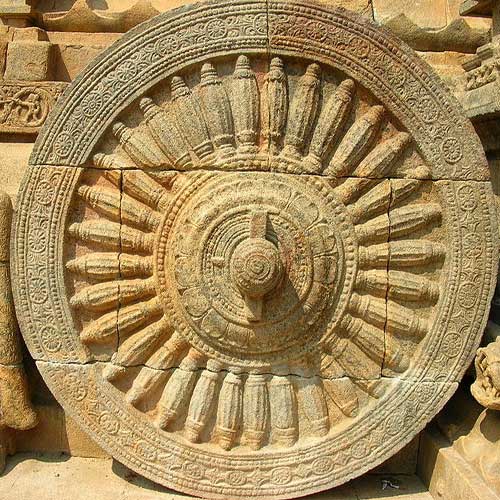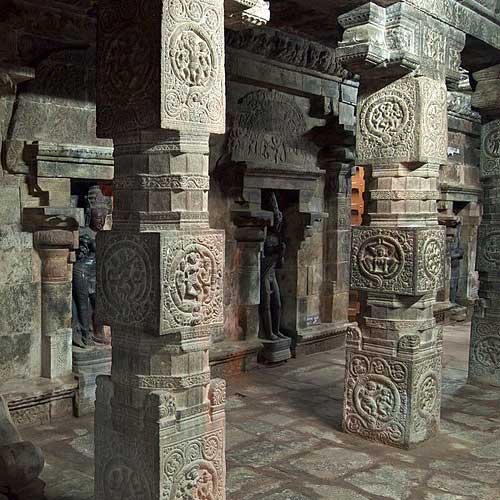
Symbolism in Indian sculptures

Different types of Indian sculptures
Indian sculptures encompass a wide range of styles and forms, each region having its distinct characteristics. The two main types of sculptures in India are the freestanding sculptures and the relief sculptures. Freestanding sculptures are three-dimensional figures that can be viewed from all angles, while relief sculptures are carved into a flat surface, such as temple walls or pillars. Within these categories, there are various styles, such as the Chola style of South India, known for its intricate details and sensuous forms, and the Gupta style of North India, characterized by its idealized proportions and serene expressions. Other notable styles include the Gandhara style, which combines Indian and Hellenistic influences, and the Hoysala style, which features highly ornate and decorative sculptures. These diverse styles reflect the cultural and historical influences that shaped Indian art over the centuries.


Famous sculptures and their significance
India is home to countless famous sculptures, each with its own significance and impact on the art world. One such example is the statue of the Great Buddha at Sarnath, a masterpiece of the Gupta period. This sculpture represents the Buddha’s first sermon after attaining enlightenment, known as the “Turning of the Wheel of Dharma.” Another iconic sculpture is the Nandi bull at the Brihadeeswarar Temple in Thanjavur, Tamil Nadu. These famous sculptures serve as cultural landmarks and continue to inspire artists and art enthusiasts from around the world.


Techniques and materials used in Indian sculpture
Indian sculptures are created using a variety of techniques and materials, each contributing to the unique characteristics of the art form. The most common technique is stone carving, where the sculptor uses chisels and other tools to shape the material into the desired form. Stone, particularly granite and marble, is the preferred material for many sculptures due to its durability and ability to retain intricate details. Bronze is another popular material, known for its malleability and the ability to capture subtle expressions. Wood, terracotta, and even ivory have also been used in the creation of sculptures. The techniques and materials used vary depending on the region and time period, resulting in a diverse range of styles and aesthetics.
Where to see Indian sculptures in India
India is replete with temples, museums, and archaeological sites that house a vast collection of Indian sculptures. The Khajuraho Group of Monuments in Madhya Pradesh is renowned for its intricate carvings and erotic sculptures, providing a glimpse into the artistic sensibilities of the Chandela dynasty. The Ellora Caves in Maharashtra showcase a harmonious blend of Hindu, Buddhist, and Jain sculptures, reflecting the religious syncretism of ancient India. The Chola Temples in Tamil Nadu, such as the Brihadeeswarar Temple and the Airavatesvara Temple, are known for their exquisite stone sculptures and architectural grandeur. Other notable sites include the Ajanta and Ellora Caves in Maharashtra, the Konark Sun Temple in Odisha, and the temples of Khajuraho in Madhya Pradesh. These sites offer a rich tapestry of Indian sculptures, allowing visitors to immerse themselves in the country’s artistic and cultural heritage.
Conclusion: Appreciating the beauty and cultural significance of Indian sculptures
Indian sculptures are not merely works of art; they are windows into the rich tapestry of Indian mythology, culture, and spirituality. Through their intricate details and symbolism, these sculptures invite viewers to delve deeper into the stories and teachings they represent. From the grand temples of South India to the serene caves of Maharashtra, each sculpture tells a unique tale and leaves an indelible impression on those who behold it. The preservation and appreciation of these sculptures are vital to understanding the profound impact they have had on art, spirituality, and society. So, next time you encounter an Indian sculpture, take a moment to observe its gestures, decipher its symbolism, and appreciate the timeless beauty that lies within. It is through these sculptures that the soul of India’s artistic heritage continues to thrive and inspire generations to come.
